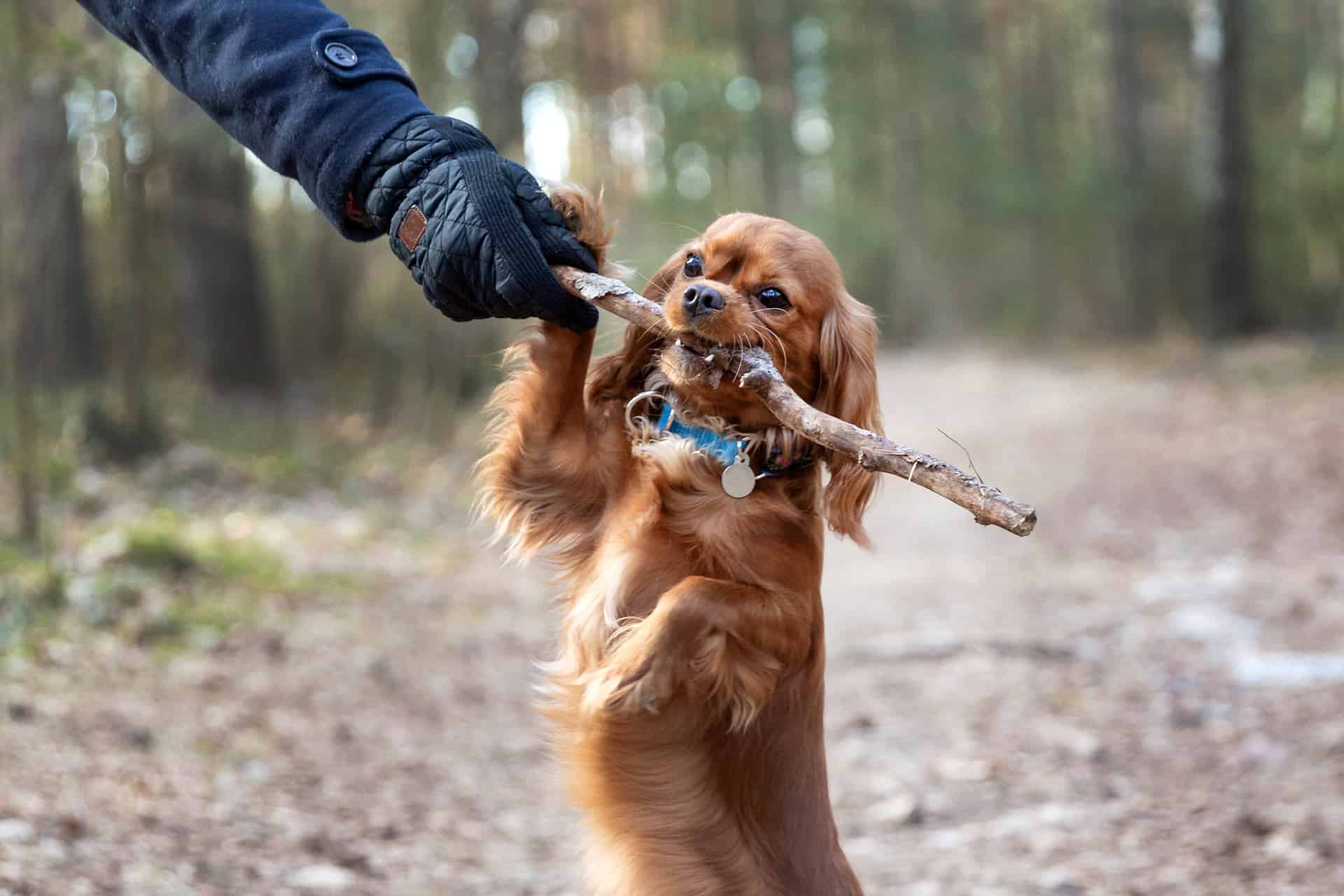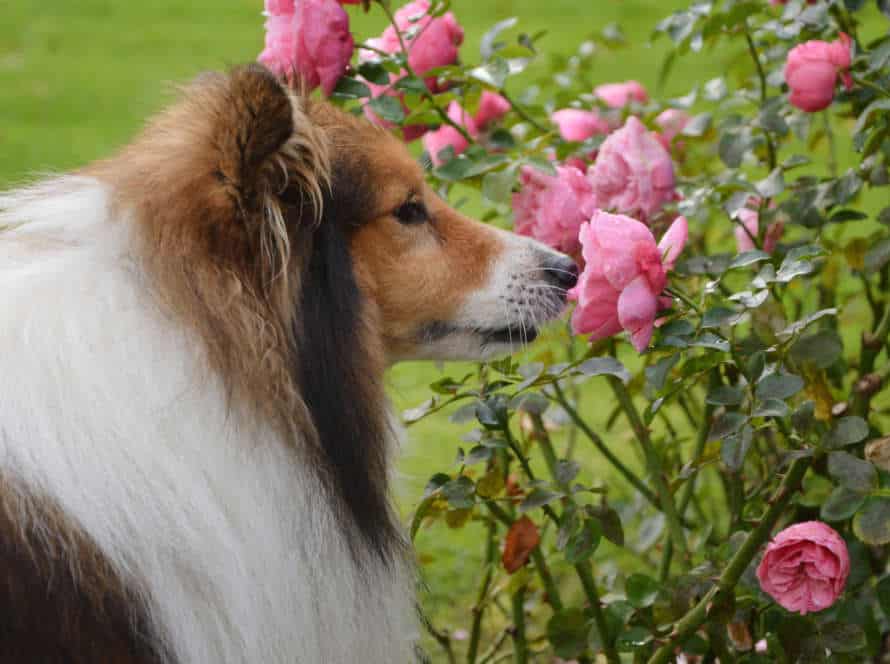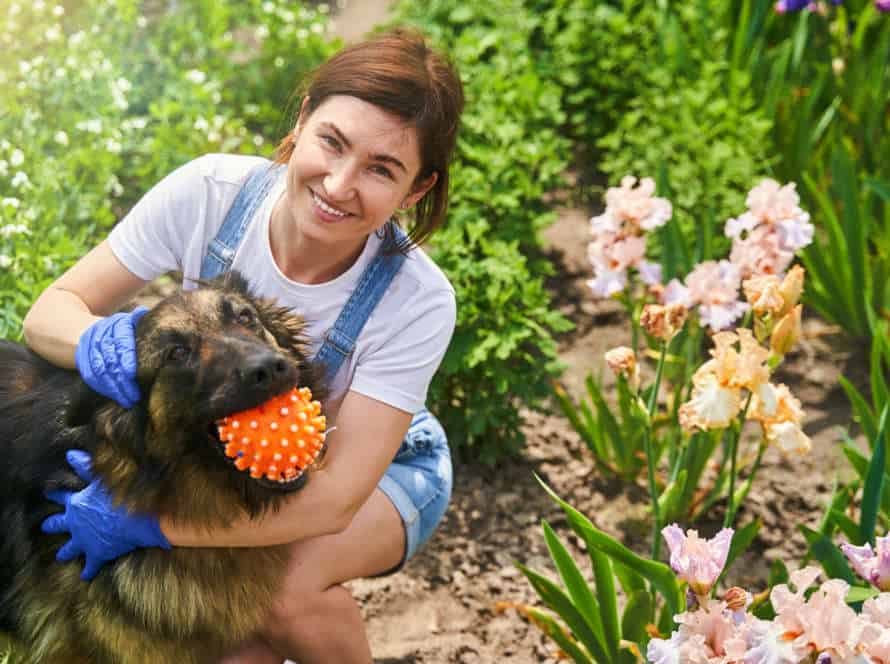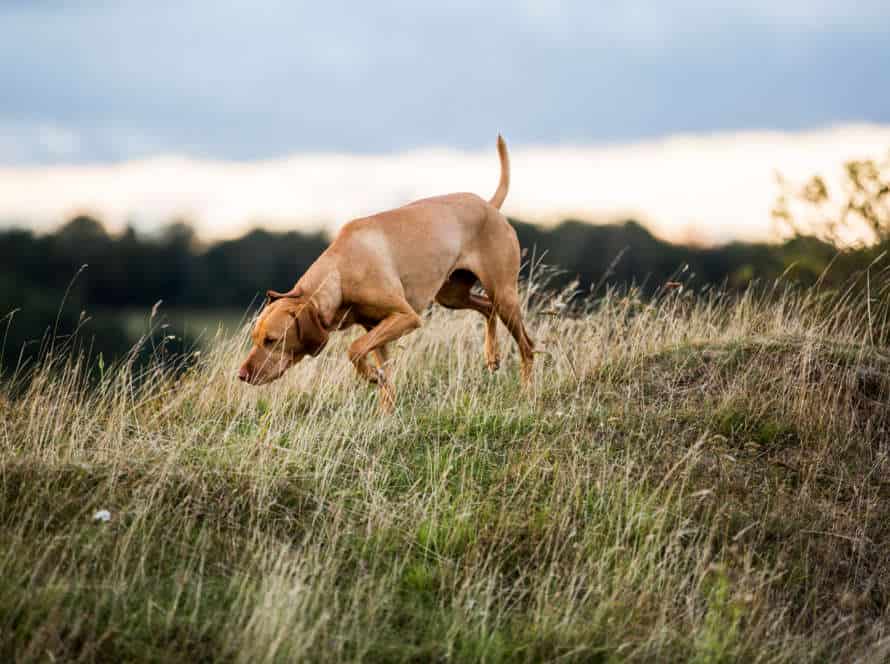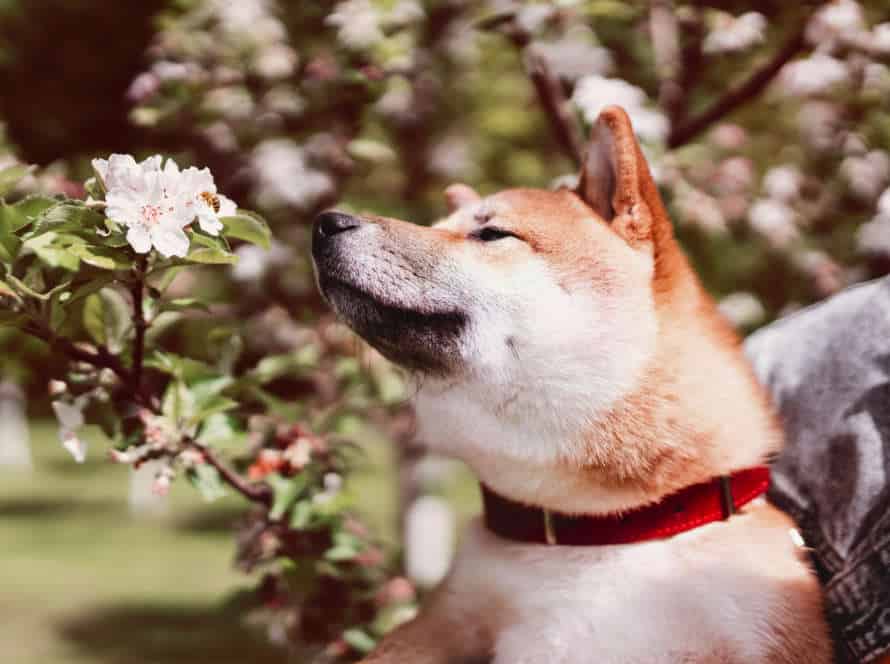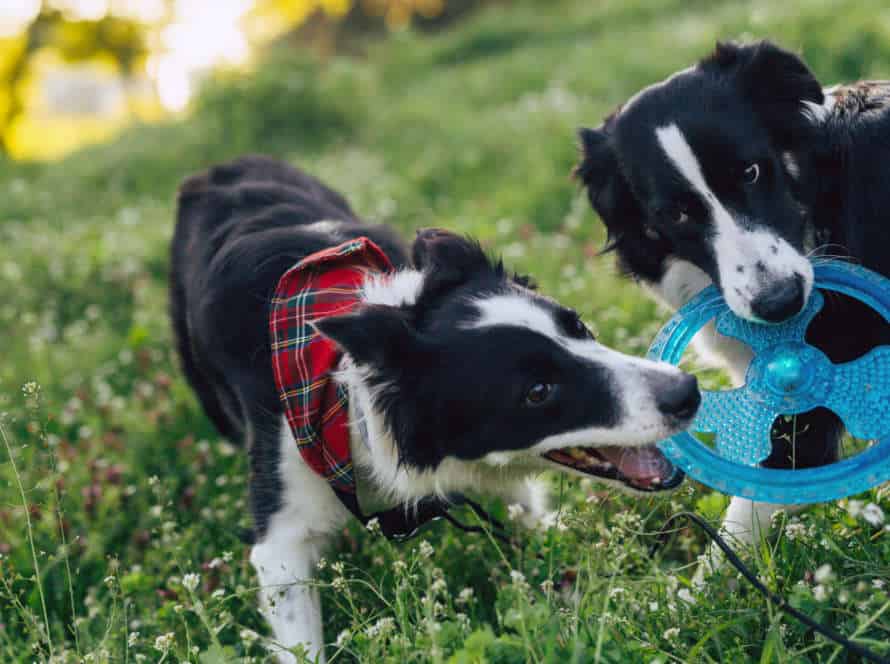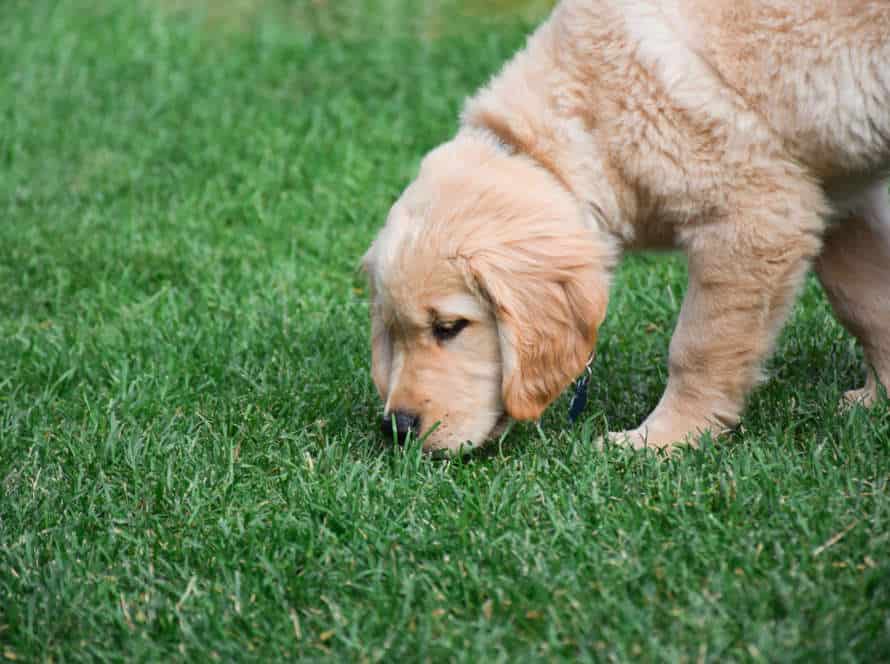Puppy Play Safety: Ensuring a Positive Experience
Safety is essential for a positive and healthy puppy play experience. Here’s how to keep your pup safe during playtime:
- Always monitor them. Intervene if it gets too rough.
- Pick toys that are the right size and won’t break.
- Keep them away from stairs, pools, or other dangerous places.
- Socialize them in a secure environment.
- Limit playtime. Too much play can be tiring and overstimulating for puppies.
Take these measures and your pup will grow into a happy and healthy dog.
Safe Play Environment
Puppy play? Essential to create a safe space.
- Supervise constantly.
- Supply toys and yummy treats for enrichment.
- Set limits.
For a positive experience, keep these safety tips in mind! Let’s discover more?
Puppy-Proofing the area
It’s vital to create a safe space for your pup before bringing them home. To do this, you must puppy-proof the area! Here’s how:
- Remove any harmful items or toxins from reach.
- Block off unsafe areas such as balconies or stairs.
- Organize cords and wires away from your pup.
- Secure furniture and appliances that could hurt your pup.
- Provide them with plenty of age-appropriate toys.
By puppy-proofing, you can let your pup play freely and safely – giving a positive experience for all!
Ensuring proper supervision
Supervise puppies while they play – so important for their safety and enjoyment. Here’s how:
- Intervene if aggressive behavior or risky activities are seen.
- Choose a play area free from hazards.
- Give toys and treats and reward good behavior with praise.
- Don’t let play last too long; rest breaks should be had in between.
- Remember each puppy’s personality, size and energy level when playing and adjust accordingly.
Supervision during playtime prevents injuries, builds confidence and helps socialization.
Proper fencing and gates
Fencing and gates are essential for creating a safe play area for your pup.
Here are some tips for choosing and installing the right ones:
- Choose a fence that is at least 4 feet tall and made of tough materials like wood, vinyl, or metal.
- Securely anchor it into the ground or attach it to strong posts.
- Get a gate that’s easy to open and close securely. It should latch automatically.
- Make sure the gate swings inwards, away from the playing area. Your puppy shouldn’t be able to push it open.
- You might want to install a second gate or partition for when your pup plays unsupervised.
- Check your fencing and gates regularly for any damage or wear and tear. Make repairs quickly to keep your pup safe.
Safe Play Behaviors
Playing with puppies? Great! Just remember the best practices. Supervise playtime to keep puppy and owner safe and happy. Follow general guidelines. It’s easy! A few simple steps will make playtime fun and safe. Make sure to distinguish between right and wrong behaviors. Enjoy the time with your puppy!
Monitoring appropriate play behavior
When it comes to puppies, playtime is a must! But, keeping an eye on proper play behavior is essential.
These behaviors should be kept in mind for safe play:
- Supervise playtime, so if it’s too rough, intervene.
- Give toys, to keep them away from chewing furniture.
- Avoid negative reinforcement, like physical punishment or yelling.
- Take regular breaks, to avoid over-exhausting your pup.
Monitoring the right play behavior, ensures a positive experience that promotes growth and socialization.
Addressing aggressive or inappropriate behavior
Puppy playtime is great for socializing, but aggressive or bad behaviour can ruin it quickly. Address it ASAP to keep it positive. Here’s how:
- Interrupt the bad behaviour with clapping or noise.
- Redirect their attention with a toy or treat.
- Praise good behaviour and reward with treats.
- If it persists, get help from an expert.
All puppies are different, so patience and persistence will help teach them safe play.
Training and socialization
Training and socializing your pup is key for a positive play experience. It’ll help them develop good play habits, preventing harm to themselves and others. Here are some tips:
- Begin early – Get a head start by socializing and training your pup early, establishing good play behaviors.
- Supervise – Ensure play with other vaccinated, well-behaved dogs. Helps them control bites, understand body language and pick up manners.
- Positive Reinforcement – Reward good play with treats and verbal praises.
- Set Limits – Schedule short play sessions with breaks to avoid over-exhaustion.
Remember, proper training and socialization are important for your pup to become a confident, well-adjusted adult that plays safely. Pro Tip: Consult professionals for more advice.
Safe Play Toys
Puppy playschool? Essential! Securing a safe and stimulating environment is the key. To do that, offer your pup safe play toys. These act as both a source of comfort and amusement. Plus, they help them learn great experiences! So, what are the best toys for puppy play safety? Let’s explore!
Choosing appropriate toys for your puppy
Selecting the right toys for your puppy is key to keep them safe and give them a positive play experience. Consider these aspects before getting a toy:
- Age: Pick toys that fit your puppy’s age and stage of development. Shun toys with small parts or detachable pieces for young pups.
- Size: The toy should be the right size for your puppy to prevent choking hazards.
- Material: Get toys made of non-toxic materials that are safe for your puppy to chew and play with. Avoid toys with sharp edges or that can cause injury.
- Durability: Go for toys that are durable and can handle a puppy’s rough play. Check the toy often for damage and replace it if necessary.
- Play style: Watch your puppy’s play style and choose toys that match their preferences. Some puppies like chasing and fetching, while others prefer chewing and tugging.
By following these tips, you can get toys that promote a positive play experience and keep your puppy safe.
Avoiding dangerous toys and choking hazards
Safety’s top priority when buying toys for puppies. So, here are some tips to keep in mind:
- Avoid toys that are too small or have parts that could be swallowed or choked on.
- Choose toys made of non-toxic materials that are hard to shred.
- Make sure the toy size and strength is right for your pup’s age and breed.
- String or ribbon toys can choke your pup. So, stay away from those.
- Always keep an eye on your pup when they’re playing with toys to prevent accidents or choking.
Remember, a safe toy is a happy puppy!
Rotating toys regularly to keep them engaged
Rotating toys is a must for keeping puppies entertained! Here’s how:
- Divide their toys into categories like chew toys, plush toys, interactive and puzzles.
- Choose a few from each and rotate them out every few days.
- Keep the rest put away so they don’t get bored.
Doing this keeps them mentally and emotionally stimulated, and gives them a safe play environment.
Pro Tip: Use it to introduce new toys to your pup – they’ll investigate each one and form preferences.
Safe Play Schedule
Scheduling regular and appropriate puppy play times is important for a positive experience. Provide a safe play environment, introduce playmates gradually, and monitor play for distress signs. What are the benefits of creating a safe play schedule? Let’s take a look!
Ensuring proper rest and recovery time for puppies
Rest and recovery are key to keeping puppies healthy and safe. 8-20 week old puppies need 18-20 hours of sleep per day. Give them a peaceful, cozy spot to rest in.
For play time, here are some tips:
- Schedule frequent 10-15 minute playtimes throughout the day.
- Monitor behavior during play; stop if they seem tired or aggressive.
- Avoid intense jumping or roughhousing.
- Offer lots of toys and regular breaks.
- Rest is just as important as playtime.
Pro Tip: Talk to a vet for a safe, healthy play and rest plan.
Incorporating structured playtime into their routine
Structured playtime is necessary for your pup’s wellbeing. Make sure they stay safe with these tips!
- Set up a special play area – free of hazards.
- Always supervise them during play.
- Include obedience training in playtime – to teach your pup boundaries and expectations.
- Take regular rest breaks to avoid overstimulation.
- Play age/size-appropriate games – avoid any that encourage aggression.
Pro Tip: Structure playtime to not only give physical and mental exercise, but also to strengthen the bond with your pup.
Limiting playtime to avoid overstimulation and exhaustion
Limiting playtime is essential to keep your puppy from overstimulation and exhaustion. Playing is important for their physical and mental development, but too much can be bad for their health. Here are some tips for a safe play schedule:
- Schedule playtime at different times and make sure it doesn’t conflict with sleep.
- Observe behavior during playtime for signs of being overwhelmed or tired.
- End play if they become too rough, pant heavily, or show signs of stress.
- Age, breed, and health condition can affect how much playtime they need.
With the right play schedule, your puppy can have a positive experience and grow properly.
Safe Play with Other Animals
Puppy play is important, but safety is key! It’s vital to recognize typical puppy play behaviors. That way, you can make sure all animals are safe. Monitoring their playtime is important too. This helps to prevent any bad interactions. Let’s look at how to ensure safe play with other animals.
Properly introducing puppies to other animals
Introducing a pup to other animals needs to be done safely and positively! Here’s how:
- Begin slowly and closely watch their interactions.
- Reward good behavior with treats and praise.
- Let the animals sniff and explore each other under your watchful eye.
- Control their movements by using a leash or fence during the first introduction.
- Gradually let them spend more time together in a controlled environment.
- At any sign of aggression or fear, separate them and try again later.
- Patience and consistency are key for introducing a puppy and other animals.
Monitoring playtime with other animals
Monitoring playtime between your pup and other critters is crucial for a safe and fun experience. Here’s how:
- Introduce your puppy to other animals gradually and in a controlled space.
- Supervise interactions between your pup and other animals, to avoid aggressive behavior or disputes.
- Be cautious of body language cues like barking, flattened ears, raised fur — these may indicate fear, anxiety or aggression.
- Give your puppy many chances to socialize with different breeds, sizes and ages – this’ll help build confidence and social skills.
- Reward positive behavior, and redirect negative behavior with positive reinforcement training.
Pro Tip: Stay patient and calm during playtime, and prioritize the safety and wellbeing of all animals.
Addressing any issues with other animals in a calm and controlled manner
Safety is key when interacting with other animals. As a pet owner, you may face the challenge of how to interact with another animal safely. Here are some tips to help you out!
- Stay calm – Anxiety and fear can easily be transmitted through the leash. Make sure you’re aware of your breathing, and use a soothing voice when communicating with both animals.
- Observe body language – Pay attention to the body language of the other animal and their handler. This will help you decide the best course of action.
- Stay in control – Make sure you have control over your pet at all times. Use a harness and leash to keep them calm and stop them from escaping.
- Gradual introduction – Introduce the animals slowly and in a controlled way. Start by having a short and supervised session, then give them some space to play.
Pro Tip – Be sure to take the necessary precautions to guarantee the safety of both animals. Doing this will make the experience stress-free and positive for all involved!
Frequently Asked Questions
1. What is puppy play?
Puppy play is a form of role-playing where the participants take on the roles of puppies and their handlers or trainers. This can involve actions such as playing fetch, chew toys, and using barking or other forms of communication.
2. How do I ensure a safe and positive puppy play experience?
First and foremost, establish clear boundaries and rules for behavior during play. This includes things like not biting, scratching, or engaging in rough play. Additionally, always supervise play sessions to ensure that all participants are engaging in safe, consensual play.
3. Can puppies get hurt during playtime?
Yes, just like with any physical activity, there is always a risk of injury. It is important to make sure that all playtime activities are safe and appropriate for the age, breed, and size of your puppy.
4. Should I allow my puppy to play with other dogs?
If your puppy is up to date on their vaccinations and the other dogs are known to be healthy and well-behaved, playtime with other dogs can be a great way for your puppy to socialize and learn proper social cues and behavior. However, always supervise these interactions to ensure that play remains safe and positive.
5. What if my puppy seems hesitant to play?
Some puppies may be shy or hesitant when it comes to playtime. This is normal and should be respected. Allow your puppy to observe and gradually get comfortable with the idea of play. Always approach play slowly and calmly, taking your puppy’s cues on what they are and are not comfortable with.
6. Is it okay to use toys during puppy play?
Yes, toys can be a great addition to puppy playtime, as long as they are safe and appropriate for your puppy’s age and size. Avoid toys with small parts that could be swallowed or cause choking, and always supervise your puppy’s use of toys.

